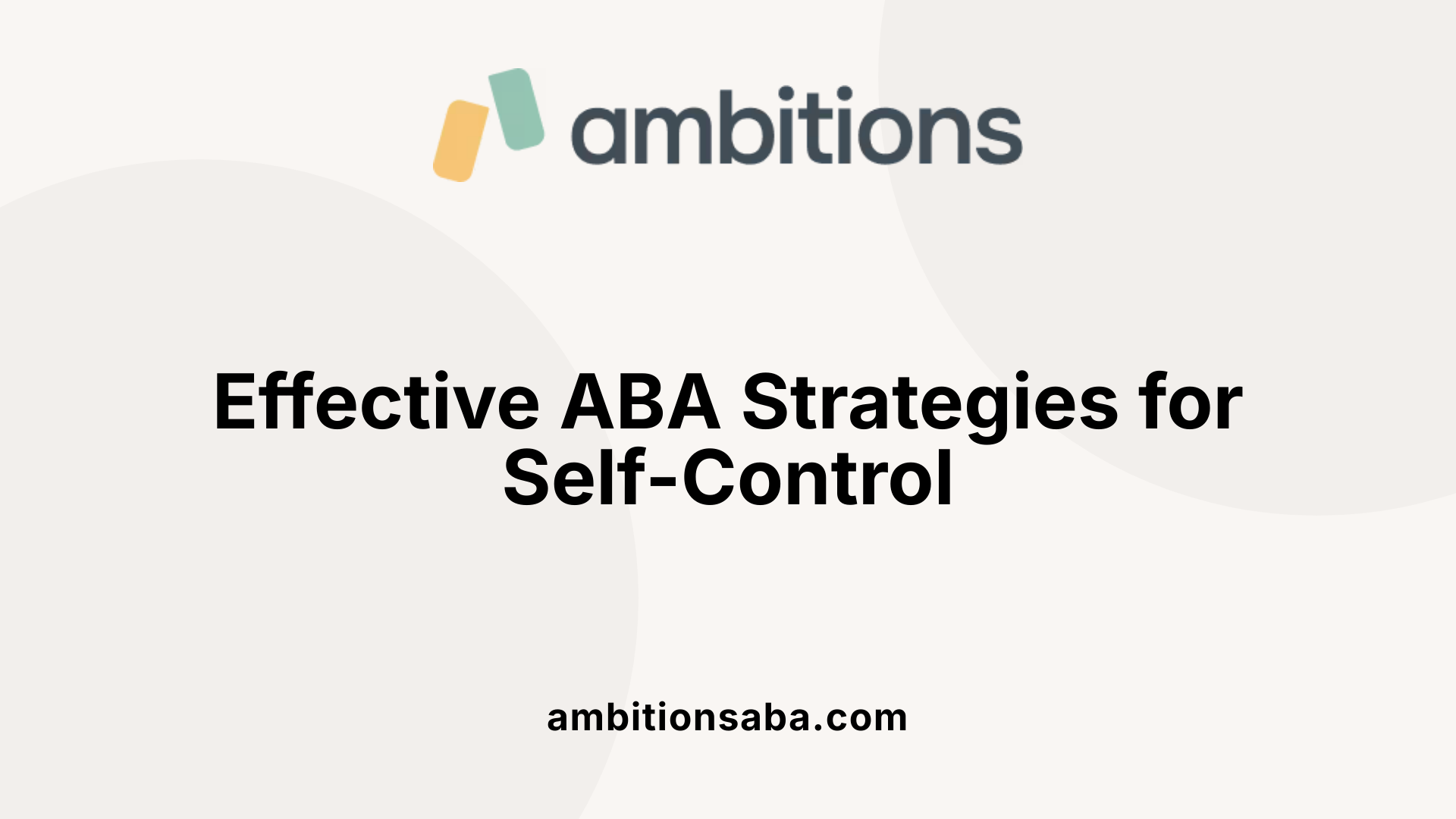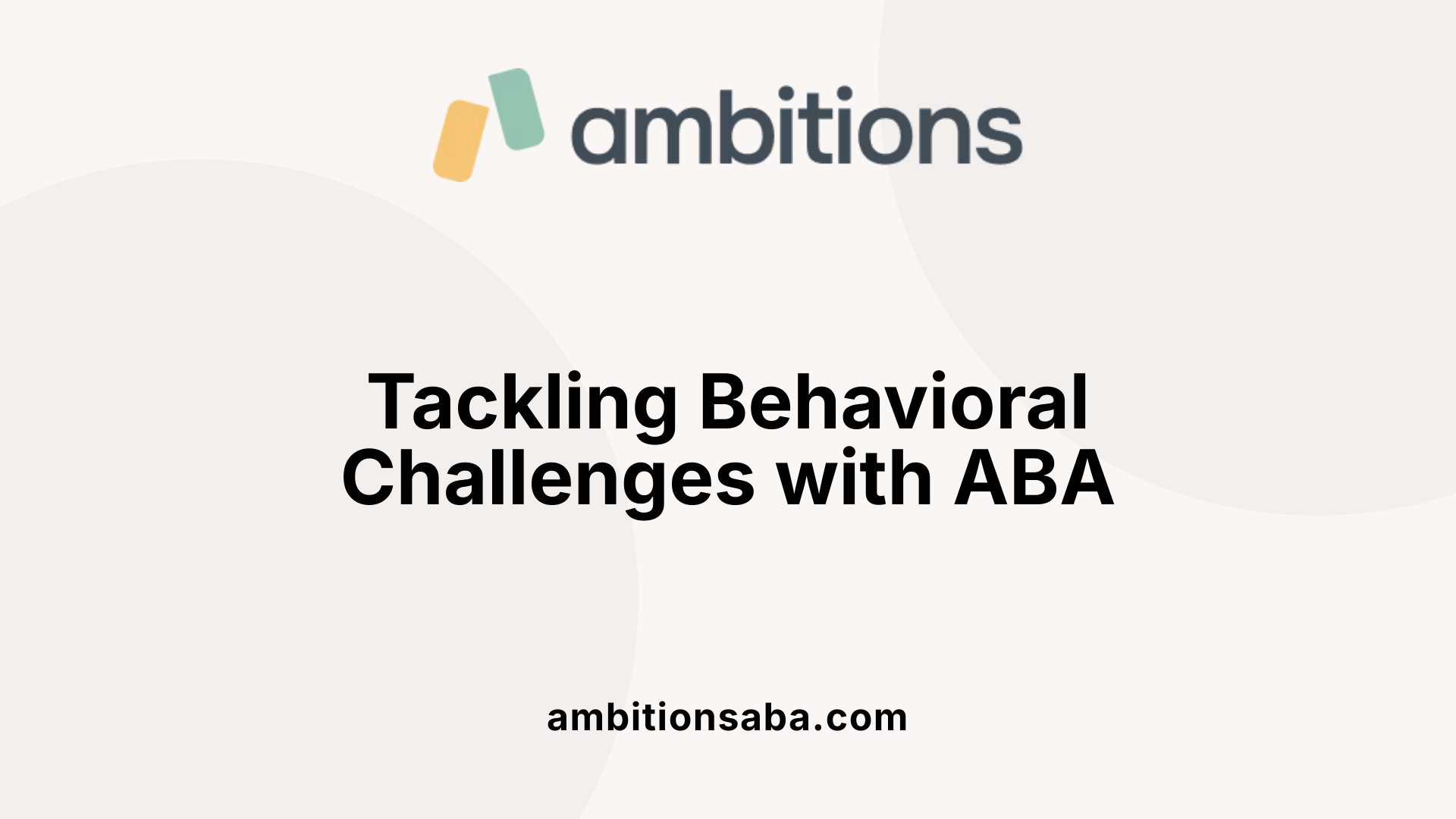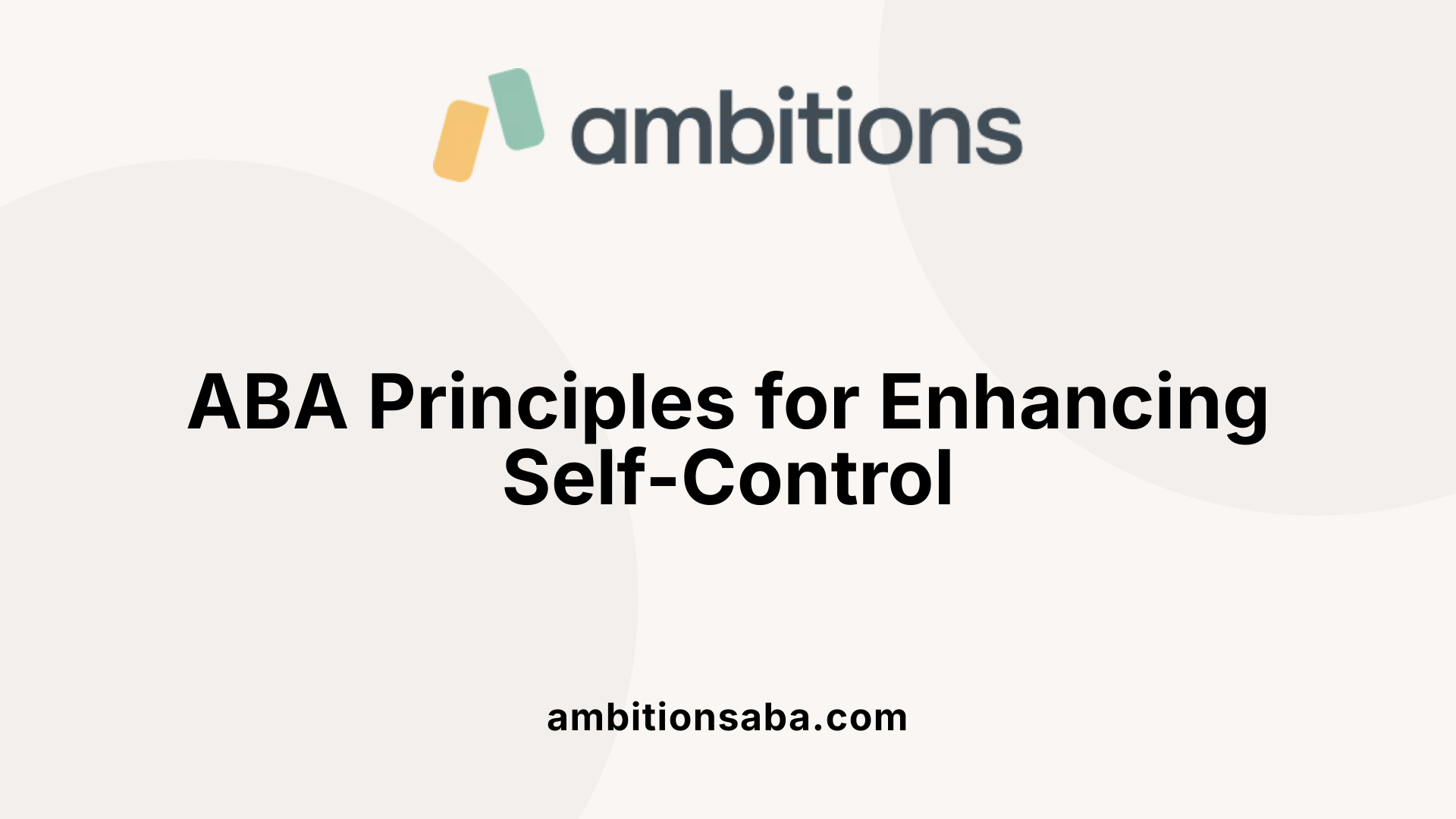Strengthening Families Through Effective Parenting Interventions
Understanding the Role of ABA in Developing Patience
Applied Behavior Analysis (ABA) is a scientifically validated approach to understanding behavior and how it can be changed. Among its many applications, ABA is instrumental in enhancing patience and delayed gratification skills, particularly in children with autism. By focusing on structured reinforcement and personalized interventions, ABA therapy helps mitigate behavioral challenges and fosters a foundation of self-control. This article delves into the myriad ways ABA supports the development of these essential skills, equipping children with strategies to navigate their environments more effectively.
The Importance of Delayed Gratification in Growth

Definition of Delayed Gratification
Delayed gratification is the ability to resist the temptation of an immediate reward and wait for a larger, more rewarding one later. This skill is pivotal for developing self-control and patience in children, particularly those on the autism spectrum.
Impact on Emotional Well-Being and Goal Achievement
Learning to delay gratification profoundly influences emotional well-being. It equips children with the skills to improve their focus, manage emotions, and diminish impulsive responses. For autistic children, mastering this skill fosters resilience and perseverance, allowing them to navigate life’s challenges more effectively.
Children adept at delaying gratification are generally better at setting and achieving long-term goals, which reinforces their motivation and dedication.
Relevance to Autistic Children
Research indicates that autistic children often struggle with delaying gratification compared to their typically developing peers. They may show lower levels of effortful control, which affects concentration and task persistence. This is where behavioral therapies, particularly ABA therapy, come into play.
Through ABA therapy, structured reinforcement strategies help cultivate patience and self-control in autistic children. For example, using a token system allows them to experience the benefits of waiting for a larger reward. This method aligns with the A-B-C (Antecedent-Behavior-Consequence) framework in ABA, enhancing their ability to recognize and manage their behaviors over time.
The role of parents is equally important; modeling patience in daily decisions encourages children to practice delaying gratification in a supportive environment. This collaborative effort builds vital skills that pave the way for better emotional regulation and social functioning.
Practical ABA Strategies to Enhance Self-Control

What are some practical ABA strategies for enhancing self-control in children with autism?
Effective Applied Behavior Analysis (ABA) strategies can significantly enhance self-control in children with autism. These include:
- Self-management interventions: Teach children to set personal goals and monitor behaviors.
- Cue charts: Visual aids help children recognize when to engage in appropriate behaviors in various settings.
- Self-reinforcement techniques: Encourage children to reward themselves when they achieve their goals, fostering independence over time.
- Emotional regulation strategies: Utilize tools like stoplight visuals that guide children in managing feelings and impulses, promoting appropriate reactions.
Implementing self-management interventions
These interventions can focus on specific behaviors such as social interactions or task completion. By encouraging children to track their progress, they can develop a sense of responsibility for their actions. Role-playing scenarios can help simulate real-life situations, allowing children to practice and reinforce their skills in a supportive environment.
Role of routines and reinforcement
Establishing consistent routines provides children with a clear framework within which they can operate. This predictability aids in enhancing their self-control and reduces anxiety related to transitions. Reinforcement strategies, like differential reinforcement, emphasize appropriate behavior while teaching patience and the value of waiting for rewards.
Through these strategies, children can make strides in self-regulation, paving the way for improved social skills, emotional management, and overall success.
Addressing Specific Behavioral Challenges through ABA

What is the impact of ABA therapy on specific behavioral challenges such as patience and delayed gratification in children with special needs?
ABA therapy offers a structured framework that can greatly enhance patience and the skill of delaying gratification in children with special needs. Central to this approach is the creation of personalized Behavior Intervention Plans (BIPs) tailored to each child's unique needs.
Through these individualized strategies, ABA therapists work to reinforce desired behaviors while diminishing problematic ones. This often involves teaching children functional communication, allowing them to express their needs effectively without resorting to maladaptive behaviors. Providing engaging activities plays an essential role in this educational process, making learning both enjoyable and effective.
To foster patience, therapists may integrate play-based methods to maintain the child's interest and facilitate the generalization of skills across different contexts. Examples include token systems that encourage saving for larger rewards and fun waiting games that make the learning process interactive.
Despite some criticisms of traditional ABA methods, many modern approaches emphasize flexibility and emotional regulation. This shift has resulted in positive impacts on social cognition and interaction, ultimately promoting essential life skills like patience. In summary, ABA therapy stands as an effective treatment in developing patience and delayed gratification, leading to substantial benefits in various developmental domains.
Applying ABA Principles to Foster Self-Control

How do ABA principles and techniques specifically improve self-control in children with special needs?
ABA (Applied Behavior Analysis) principles are highly effective in enhancing self-control in children with special needs. They focus on gradual behavioral changes through structured interventions and reinforcement strategies.
One of the core aspects of ABA is breaking tasks into smaller, manageable steps. This approach helps children learn to delay immediate gratification for larger rewards. An illustrative example of this concept is the Marshmallow Test, where children had to choose between one immediate marshmallow or two if they could wait. This experiment demonstrates the essence of self-control by effectively charting the correlation between delayed gratification and long-term outcomes.
To bolster self-management, ABA utilizes techniques like self-monitoring and self-instruction. By encouraging children to observe their own behaviors and reflect on their decisions, they increase their awareness and engage in self-regulation. Moreover, self-reinforcement strategies reward them for exhibiting desirable behaviors, thereby further motivating them to practice patience and control.
Independence and self-awareness enhancement
Both independence and self-awareness are vital outcomes of ABA interventions. As children practice self-management, they learn to handle their impulses and improve their social interactions. This is especially important because children with autism spectrum disorders may struggle with efforts like concentration and persistence.
By fostering these skills, children develop a stronger sense of self, enabling them to navigate various environments successfully. The structured nature of ABA, combined with its focus on positive reinforcement, lays a robust foundation for building vital life skills including patience and resilience, which ultimately support their growth far beyond childhood.
Research on ABA’s Effectiveness
What research supports the effectiveness of ABA in developing patience and delaying gratification in children with autism?
Research indicates that ABA (Applied Behavior Analysis) therapy effectively supports the development of patience and the ability to delay gratification in children with autism. This therapy employs structured interventions designed to gradually increase a child’s capacity to engage in tasks that require waiting or self-control.
Through ABA, children learn to remain seated for longer periods and stay focused on multi-step tasks. This gradual increase in duration reinforces their patience. In addition to focusing on sitting still, ABA emphasizes communication skills. When children can express their needs and emotions, they become better equipped to wait and articulate their desires appropriately, further enhancing their patience.
Another important component of ABA is the use of Behavioral Skills Training (BST). This method creates scenarios in which children practice patience in real-world contexts—such as waiting safely while their caregivers attend to other matters. By incorporating these practical experiences, ABA fosters a deeper understanding of delayed gratification.
Overall, ABA therapy's structured and rewarding approach contributes to children’s ability to manage their impulses and behaviors. Through consistent reinforcement and celebration of small successes, both children and caregivers navigate the challenges of learning, creating a supportive environment for developing patience and delaying gratification.
Parental Involvement in Modeling Delayed Gratification

Demonstrating real-life patience examples
Parents can play a crucial role in modeling delayed gratification by demonstrating decision-making processes that require patience. For instance, when saving for larger purchases, parents can share their planning stages with their children. This not only sets an example but also helps children see the value in waiting for a better reward.
Role of parents in ABA reinforcement
In Applied Behavior Analysis (ABA), consistent reinforcement and praise for waiting behaviors are vital. When parents acknowledge and reward their children's successes in delaying gratification, it encourages repeated practice of these behaviors. This positive reinforcement creates a nurturing cycle where children feel motivated to improve their self-control and perseverance.
Creating a supportive learning environment
Establishing a home environment that emphasizes patience and effortful control is essential. Parents should create routines and time-based expectations, such as limiting screen time or encouraging tasks before receiving rewards. Engaging children in activities that naturally involve waiting, like managing playtime, fosters a sense of achievement and cultivates their ability to delay gratification effectively.
Building Resilience through Waiting Strategies
Coping Mechanisms and Emotional Regulation
Teaching children with autism to delay gratification can significantly enhance their ability to manage emotions. This includes utilizing coping strategies, such as deep breathing and mindfulness techniques, to handle frustration when faced with delays. Introducing these practices creates a supportive environment that encourages emotional regulation while imparting essential life skills.
Incorporating Games and Waiting Periods
Engaging in fun waiting games or implementing small waiting periods for rewards allows children to practice patience in an enjoyable manner. For instance, setting up a token system where children can save for larger rewards fosters anticipation and a sense of achievement. These interactive methods not only teach self-control but also make the learning process entertaining, reinforcing the idea that good things come to those who wait.
Encouraging Resilience in Overcoming Obstacles
Building resilience through waiting for a reward is crucial. It teaches children how to cope with frustration and setbacks. By establishing routines and time-based expectations, children learn that persistence is necessary for obtaining desired outcomes. Over time, this understanding significantly contributes to their ability to face challenges and enhances their emotional well-being.
Fostering a Love for Learning Beyond Rewards
Shifting focus from tangible rewards to intrinsic motivation
In teaching delayed gratification, it's crucial to move beyond external rewards. Encouraging children to find joy in the learning process itself can create lasting engagement. Instead of aiming for a treat or reward after completing a task, helping children feel satisfied simply by learning something new is essential. This nurtures their desire to explore rather than just to earn.
Developing a positive learning atmosphere
Creating a supportive environment is vital. When children feel safe and valued, they are more likely to engage without relying solely on rewards. Techniques like positive reinforcement and acknowledging their efforts foster a sense of accomplishment that comes from within.
Balancing structured learning with spontaneous play
Integrating structure with opportunities for free play can also enhance learning. Scheduled tasks that require waiting or self-control should be interspersed with playful activities. This balance helps maintain children's interest and allows them the freedom to discover at their own pace. Engaging them in this manner promotes resilience and patience, making the learning experience enjoyable and fruitful.
| Strategy | Description | Benefits |
|---|---|---|
| Focus on intrinsic motivation | Encourage learning for enjoyment, not for rewards. | Increases engagement and love for learning. |
| Create a positive atmosphere | Use positive reinforcement and validation. | Builds a sense of security, promoting participation. |
| Structure with spontaneous play | Blend learning tasks with fun, unstructured time. | Encourages patience while keeping learning lively. |
Harnessing the Power of ABA for a Better Tomorrow
Through the principles of Applied Behavior Analysis, children with autism can learn to better navigate the intricacies of delayed gratification and patience. The skills developed not only mitigate immediate behavioral challenges but also lay the groundwork for greater success in various life domains, including academic achievement, social interactions, and emotional well-being. With consistent reinforcement and a focus on individual needs, ABA therapy offers a path to enhanced self-control and resilience, preparing children for a future where they can thrive and achieve their full potential.
References
- Delaying Gratification: An Essential Skill for Autistic Children to Learn
- Cultivating Patience and Impulse Control in Your Child | SMPG
- Applied Behavior Analysis (ABA) | Autism Speaks
- Delayed Gratification: Important Skills For Children With Disabilities
- Reduced delay of gratification and effortful control among young ...
- Building Patience in Children with Autism - PediaPlex
- How To Navigate Success and Setbacks in ABA Therapy
- Using Behavioral Skills Training as a Tool for Effective Learning

